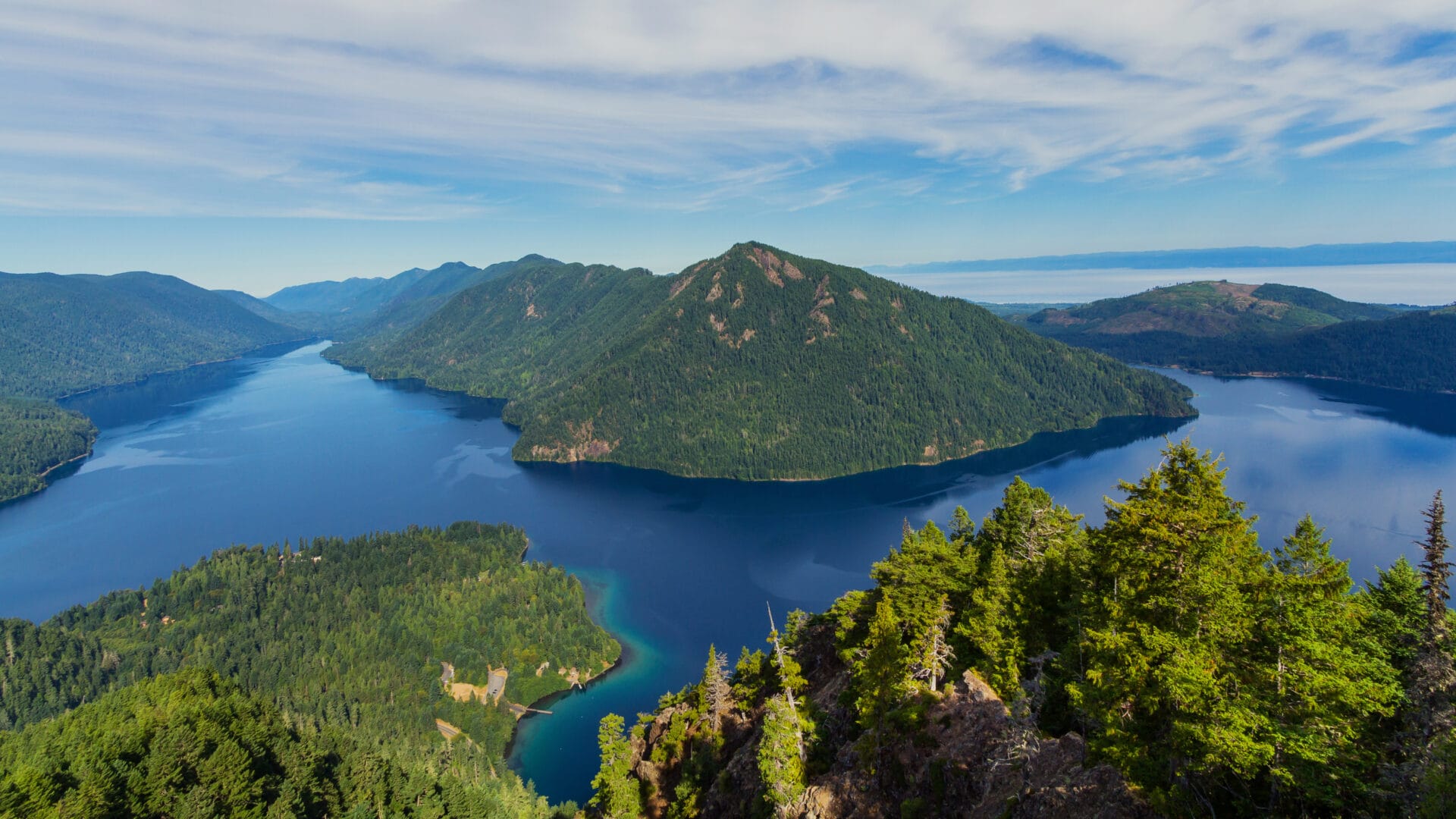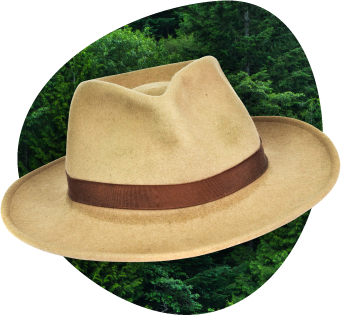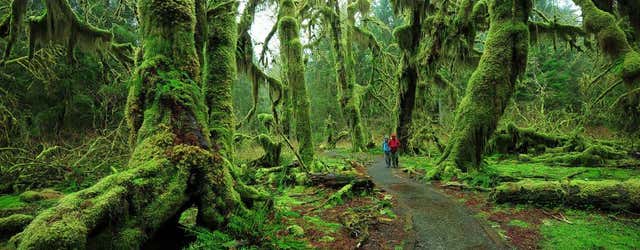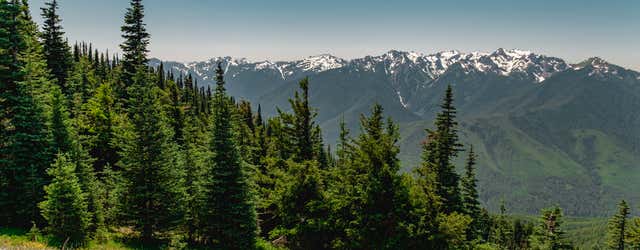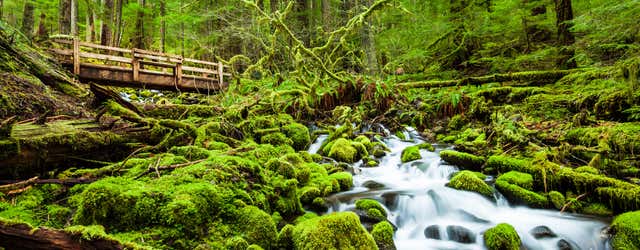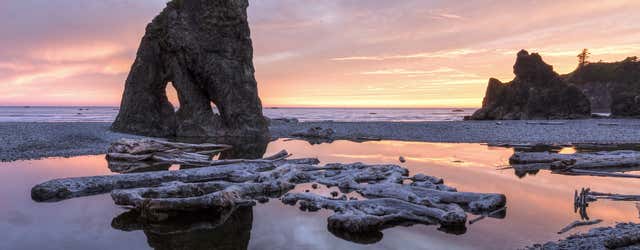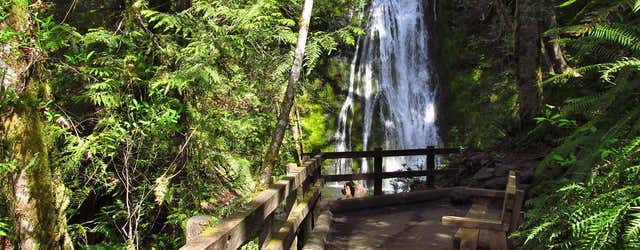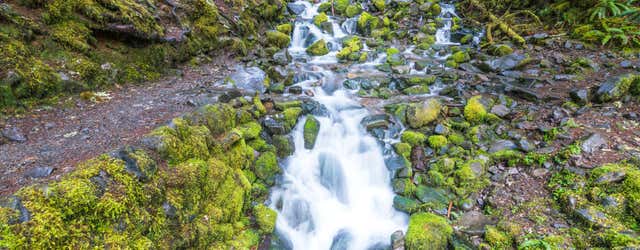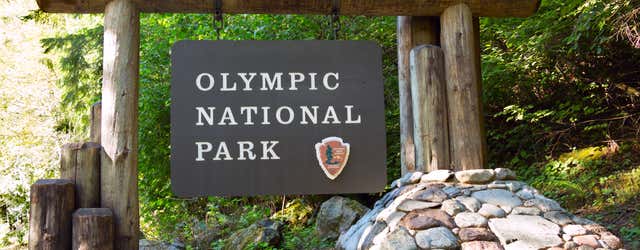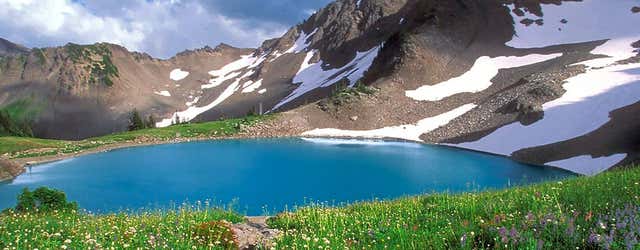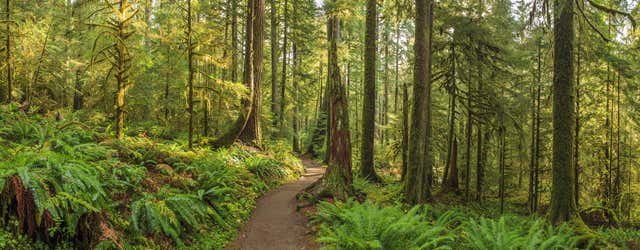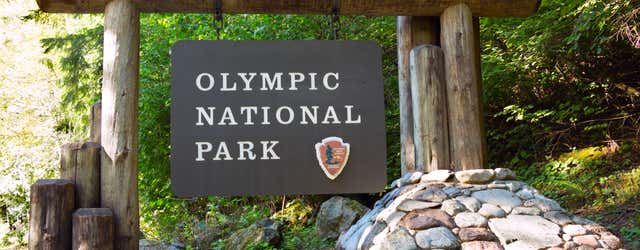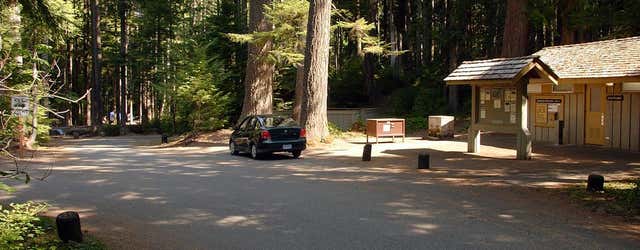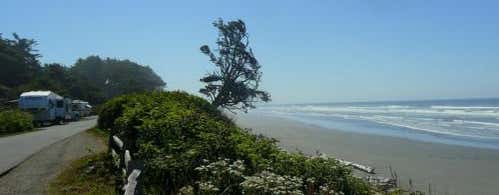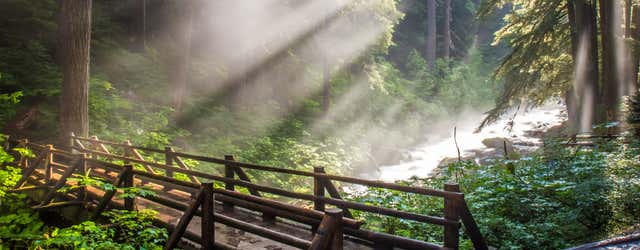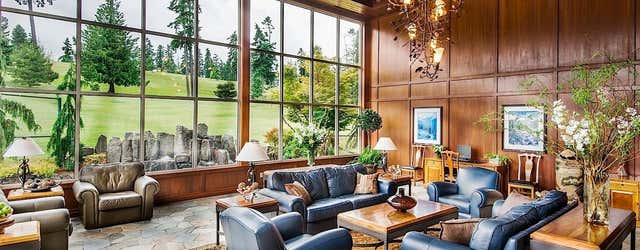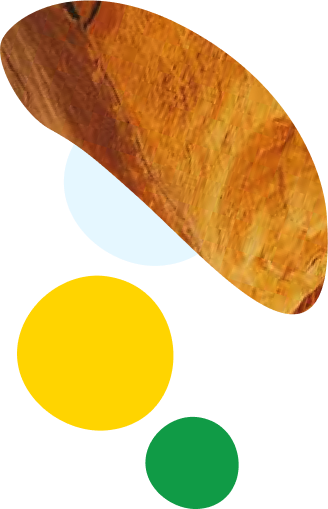Glacier-capped peaks, rugged ocean beaches, lush rain forests, and old-growth temperate forests are among the diverse charms of Olympic National Park, ancestral home of the Quileute people and a sanctuary for rare trees, abundant birds, and Roosevelt elk.
Encompassing nearly a million acres, most of it wilderness, Olympic National Park is a park meant to be seen on foot, not from the window of a car. There are no designated “scenic drives,” and while the roadside mountain views from Hurricane Ridge, at Lake Crescent, and the ocean panorama north of Kalaloch are impressive, you need to hit the trails to enjoy the best of this majestic national park.
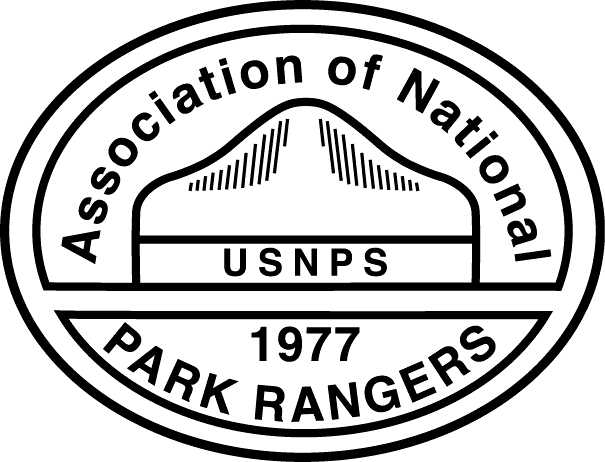
Written for you by park rangers
Who knows a national park best? Yep, the rangers who live and breathe its fresh, clean air every day. That’s who we turned to for help in creating this guide. Roadtrippers has partnered with the Association of National Park Rangers and convinced its rangers to spill their secrets for your benefit.
How to get to and around Olympic National Park
Olympic National Park is one of the more accessible national parks of the U.S. In addition to convenient air links and roads, there are several bus routes and ferries that will get you onto the Olympic Peninsula and within range of the park.
Seattle-Tacoma International Airport (SeaTac) near Seattle, Washington, is approximately a 2.5- to 3-hour drive to Port Angeles, where the park headquarters is located, and 4.5 to 5 hours to the Hoh Rain Forest, one of the park’s most popular destinations. In British Columbia, Canada, Victoria International Airport is about 2.5 hours from Port Angeles but requires a ferry ride and crossing the U.S.-Canada border.
U.S. Route 101 encircles Olympic National Park on the Olympic Peninsula, with access roads leading into various parts of the park. There is no loop road or “main road” within the park boundaries, and no direct way to drive from one region of the park to another, which requires a return to U.S. 101 to reach other access roads.
To reach U.S. 101, take I-5 south from Seattle, Tacoma, or SeaTac airport to Olympia, Washington.
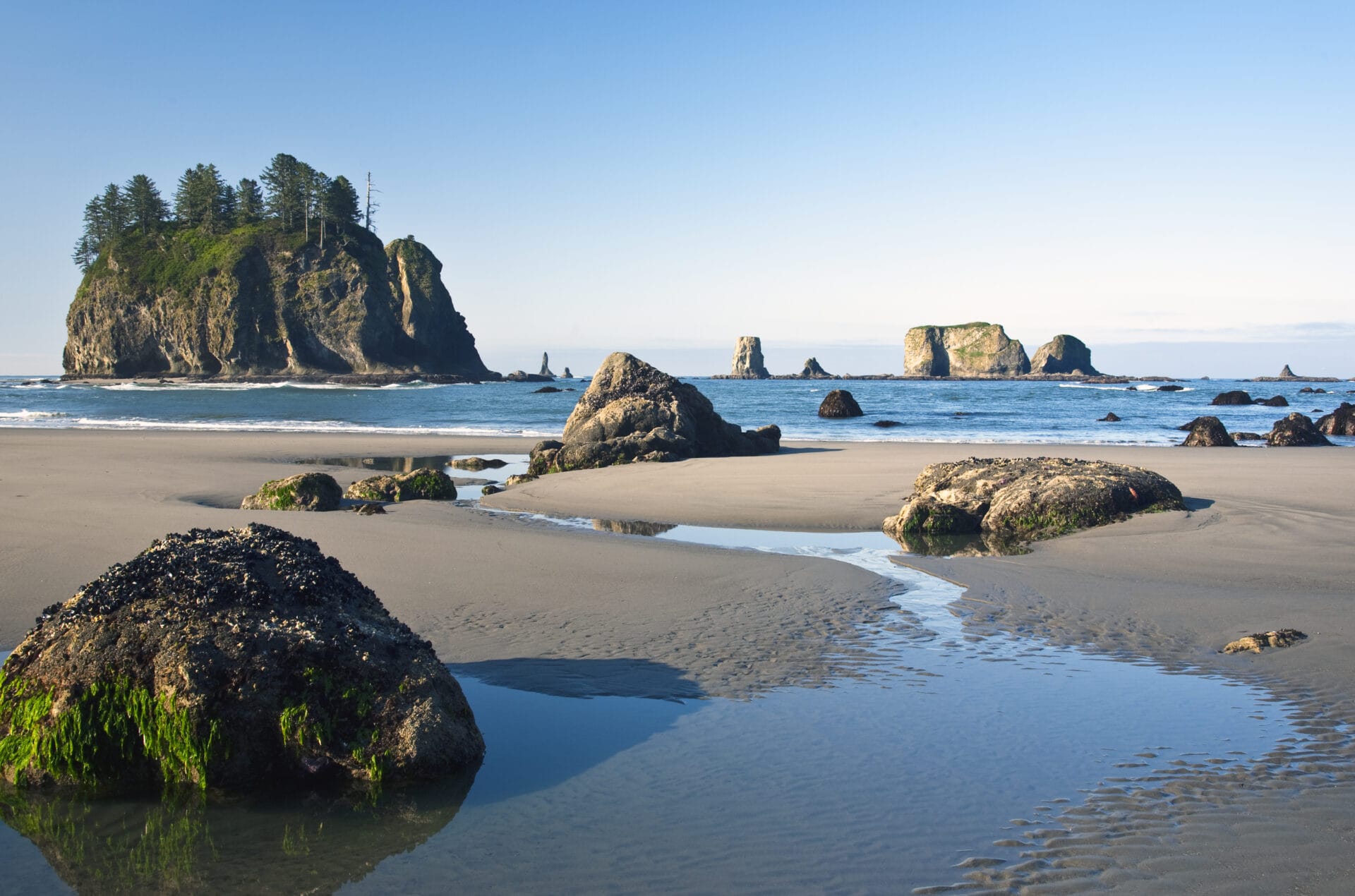
From Tacoma, you can also take State Route 16 to Bremerton on Bainbridge Island, connect to State Route 3 north, then cross the Hood Canal Bridge on State Route 104 to reach U.S. 101. There are also ferries from the Seattle area that connect to Bainbridge Island for a more scenic and leisurely approach to the park.
From coastal Washington or Oregon, you can connect to U.S. 101 in Aberdeen, Washington.
The Dungeness Line provides bus service from SeaTac to Kingston, Edmonds, Discovery Bay, Sequim, and Port Angeles, and the Clallam Transit System route includes service to Port Angeles, Sequim, Forks, and a number of Olympic National Park destinations on the northern section of U.S. 101.
SeaTac is the airport most commonly used to get to the park, no matter which region you’re heading to.
When’s the best time to visit Olympic National Park?
Olympic National Park is open 24 hours a day, 7 days a week, year-round. Some roads close seasonally, however, as do several campgrounds and other park facilities.
July and August are the most popular months, when the weather is reliably warm and often fairly dry. Summer high temperatures generally hover in the 65-to-75-degree range. While rain is common most of the year in Olympic National Park (they call Hoh a rain forest for a reason), precipitation is lowest in July, August, and September.
Fall foliage starts to turn in September and draws many visitors, as do early-season wildflower blooms in June. Hurricane Ridge offers snow play from late December to late March. Winter weather is milder at lower elevations, and rain and wind often lash the coast during the winter, offering inspiration for those willing to brave the elements.
Dramatic changes in elevation within the park—from sea level at the coast to the summit of 7,980-foot Mount Olympus—can reflect big differences in weather conditions from one region to another, so come prepared for warm, cold, and wet conditions no matter what season you visit.
Hurricane Ridge is the park’s top all-season destination, offering summertime walking and hiking and wintertime snowshoeing and skiing with an impressive mountain backdrop.
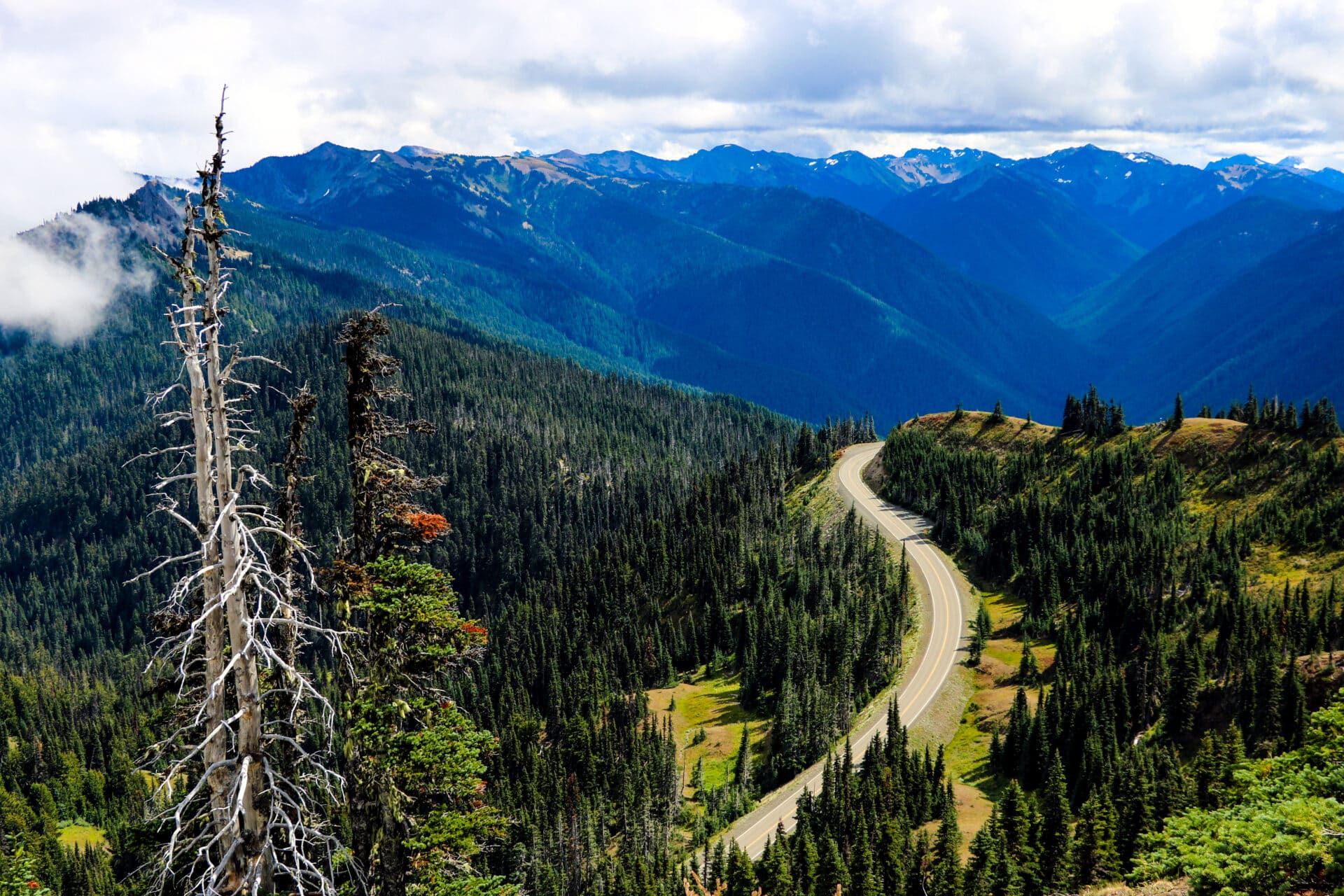
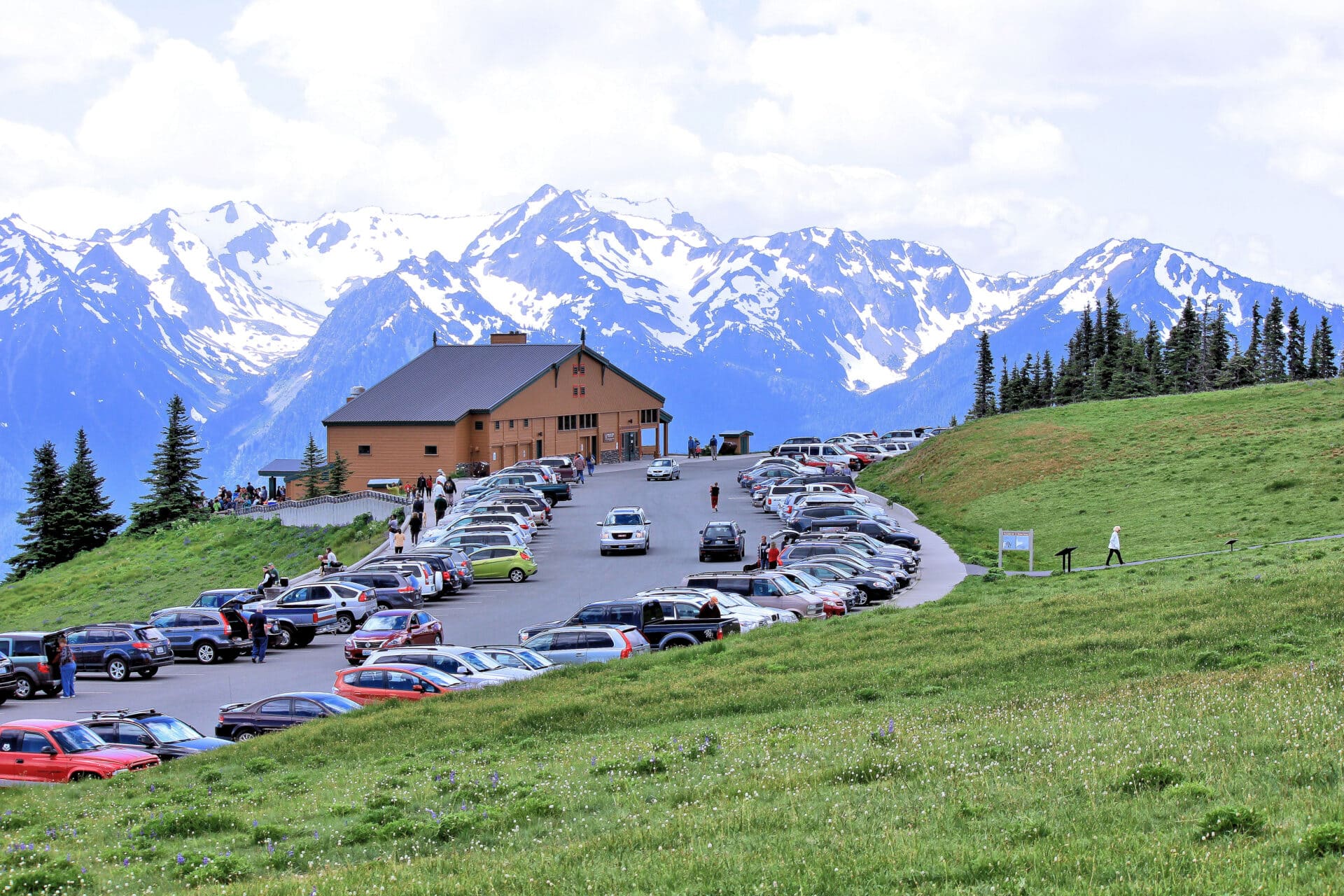
Regions
The park’s main regions correspond to points on the compass: North (Hurricane Ridge, Lake Crescent, and Sol Duc), West (Kalaloch and Mora-area beaches, Hoh and Quinault rain forests), and Southeast (Staircase). These areas fall within three distinct ecosystems: glaciated mountains (Hurricane Ridge), rugged Pacific coastline (Mora, Kalaloch Beach, and others), and lush temperate forests (the Hoh and Quinault rain forests).
Hurricane Ridge has hiking in the summer and snowshoeing and skiing in the winter. The road to Hurricane Ridge leads 17.5 miles from Port Angeles to the Hurricane Ridge Visitor Center, tracing its namesake ridgeline along the way. The road is usually open daily from May 1 until snow arrives (typically in late October), then reopens from late December until the end of March for winter activities. The westernmost ski area in the continental U.S., the Hurricane Ridge Ski and Snowboard Area has trails for skiing and snowboarding serviced by two rope tows and a Poma lift, plus a tubing park.
Lake Crescent offers kayaking, paddleboarding, canoeing, swimming, and hiking. Popular trails to Marymere Falls and Mount Storm King draw many visitors.
Sol Duc is home to the Sol Duc Hot Springs Resort, where guests can swim in thermal pools and choose from a variety of hikes, including the 0.8-mile trail to the impressive Sol Duc Falls.
Mora is the location of Rialto Beach, the only ocean beach in the park where you can drive all the way to the sand. Short hiking trails pass through forest and along the shore; near the village of La Push are trails to Second Beach and Third Beach.
Hoh Rain Forest is a lush rain forest that receives 140 inches of rain annually and is bisected by Hoh River, which flows down the western slope of Mount Olympus. The one-way Hoh River Trail runs for 18.5 miles through the river valley to the base of Mount Olympus.
The Kalaloch Beach area includes Ruby Beach and numerous other beaches, including its namesake. All trails here lead short distances to the ocean for beach sand walks and tide pool observations, some led by park rangers.
Quinault Rain Forest, located in the southwest corner of the park, offers a similar environment to the one found in Hoh Rain Forest, but with amenities such as lodges and stores nearby.
Lake Ozette, near the northwest corner of the Olympic Peninsula, has two 3-mile trails leading to the ocean over wooden boardwalks.
Staircase, in the southeast corner of the park, has hiking trails along the North Fork of the Skokomish River.
Hoh Rain Forest has a remodeled visitor center and is the trailhead for several famous short nature trails, including the Hall of Mosses and Spruce Nature Trail.
What to do at Olympic National Park?
Hiking: Hiking is the single most popular activity in Olympic National Park and, given the park’s limited road network, the only way to see most of its natural wonders.
Snow Sports: Hurricane Ridge is the nexus for winter visitors who come into the park to enjoy snow sports, both off-piste and on. The Hurricane Ridge Ski and Snowboard Area has 10 lift-serviced trails and an 800-foot vertical drop, plus a tubing park. There are also up to 20 miles of cross-country ski trails in the Hurricane Ridge area, and rangers lead regularly scheduled snowshoeing tours.
Water Activities: Most people find the water temperatures at Olympic National Park too chilly for swimming even during the summer. But there’s plenty else to do at the shore, including sea kayaking and tide pooling. Paddlers can also enjoy navigating five rivers within the park, with rapids ranging from class II to class V. Canoeing, kayaking, fishing, and motorized boats are permitted on several of the park’s lakes as well, notably Lake Crescent and Lake Ozette. Fishing is permitted on a number of rivers.
Wildlife Viewing: Animals from elk to whales call Olympic National Park and its watery horizons home. Roosevelt elk can be seen at lower-elevation valleys and rain forests, while deer are common almost everywhere in the park. You may encounter black bears in the backcountry; look for Olympic marmots in high-elevation areas like Hurricane Ridge. The Salmon Cascades Overlook in Sol Duc Valley is one of the best places to spot Pacific salmon in their natural habitat, while Kalaloch, Rialto, and Shi Shi beaches are the places to go to see migrating whales from April to May and October to November.
Ranger-Led Programs: Park rangers lead hiking treks to waterfalls, beach walks, and snowshoeing tours seasonally and offer dark-sky programs on summer nights. Most programs begin at park visitor centers or campgrounds. Information on ranger programs can be found in the park newspaper, The Bugler.
A comprehensive visit to Olympic National Park should include visits to the three main ecosystems in the park: the mountains, the forest, and the ocean beaches.
Where to hike in Olympic National Park
Easy Hikes
Hall of Mosses Trail: A 0.8-mile loop nature trail beginning near Hoh Rain Forest Visitor Center.
Kestner Homestead Trail: This 1.3-mile loop trail with interpretive information starts at Quinault River Ranger Station on the north shore of Lake Quinault and goes to a 19th-century settlers’ homestead.
Hurricane Hill Trail: This trail leads just 1.6 miles one way from the end of Hurricane Ridge Road, but it gains 700 feet of elevation and rewards hikers with panoramic views. The first half mile of the trail is wheelchair accessible.
Sol Duc Falls Trail: A short 0.8-mile walk from the end of Sol Duc Road leads to a 48-foot waterfall.
Madison Falls Trail: This paved, accessible 0.1-mile trail to a waterfall starts near Elwha Entrance Station.
Ruby Beach: A 0.2-mile one-way hike from U.S. Route 101 leads to the coast and views of offshore columns of rock called seastacks.
Rialto Beach: A natural arch and tide pools at Hole-in-the-Wall lie at the end of this 1.5-mile hike.
Spruce Railroad Trail: This 4-mile rail trail is open to walkers and cyclists. It traces the northern shore of Lake Crescent and crosses a long bridge over a serene pool called the Punchbowl.
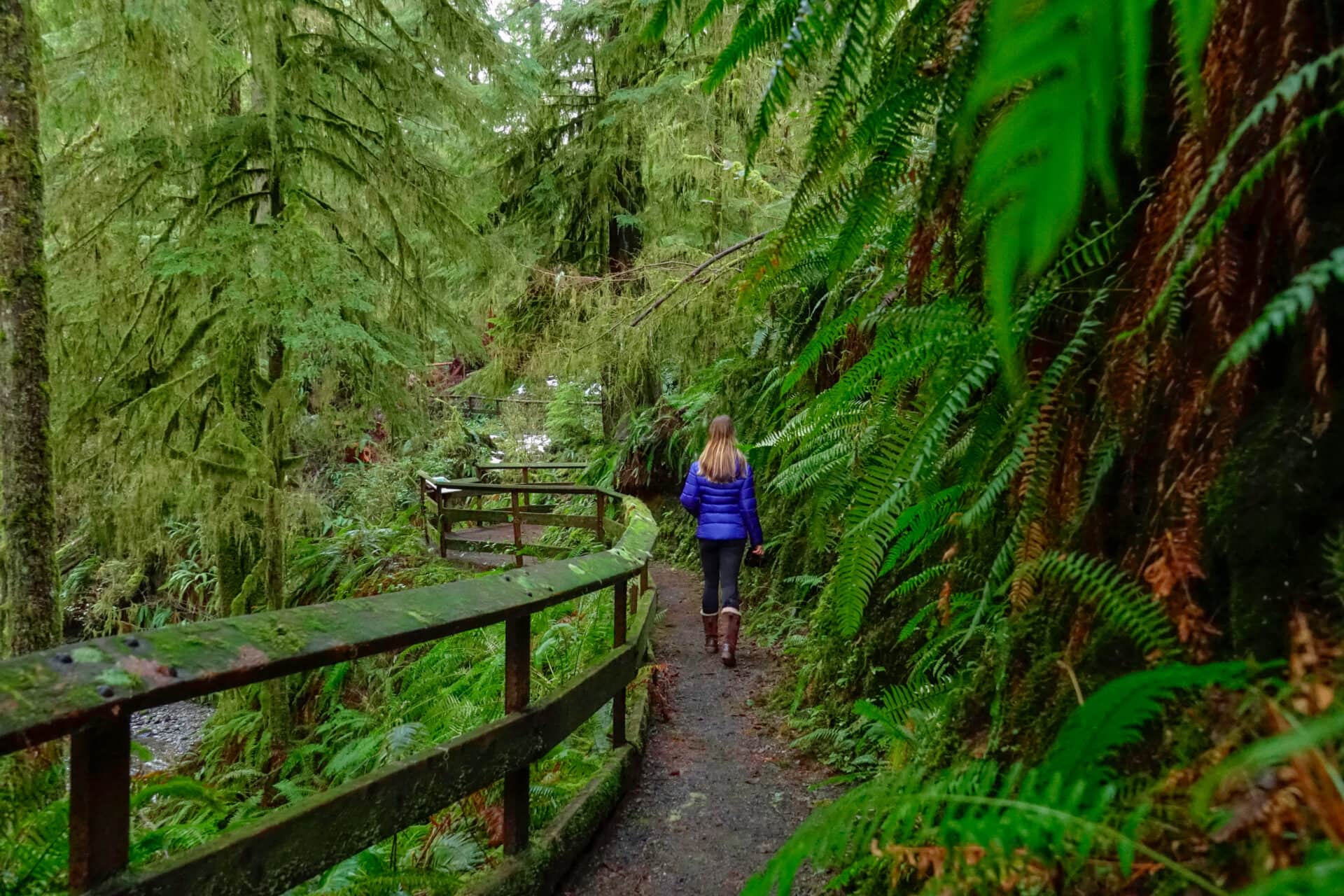
Moderate Hikes
Lover’s Lane Loop: This 5.8-mile loop trail follows Sol Duc River from Sol Duc Campground to Sol Duc Falls and Sol Duc Hot Springs Resort.
Pyramid Peak Trail: A 3.5-mile one-way trail starting near the North Shore Picnic Area climbs 2,350 feet, crosses a steep landslide area, and climbs Pyramid Mountain for outstanding views.
Geyser Valley Loop: A 6-mile loop trail at the end of Whiskey Bend Road follows Elwha River to the historic Humes Ranch Cabin.
Ozette: A 2.9-mile beach walk connects the 3.3-mile Cape Alava Trail and the 2.8-mile Sand Point Trail to make a 9-mile loop.
Strenuous Hikes
High Divide Trail: An 18-mile loop trail with more than 3,000 feet of elevation gain passes through old-growth forest and subalpine regions of the park, with great views of Hoh River Valley and Mount Olympus.
Hoh River Trail: This one-way hike from Hoh River Visitor Center to Glacier Meadows is 17.4 miles and includes up to 4,300 feet of elevation gain, with views of Mount Olympus and Blue Glacier as the reward at trail’s end.
Lake Constance Route: If you like steep and rocky hikes or scrambles, this is the trail for you: You’ll gain 3,500 feet of elevation in just 5 miles. Pause for rest and for the great lake, mountain, river, and waterfall views along the way.
Olympic is a hiker’s park—no single road passes through the center of it as in most other national parks, but every campground and road ending also serves as a trailhead for one or more hikes.
Where to stay in and around Olympic National Park?
Camping is available year-round in the park. All campgrounds are available on a first-come, first-served basis except in summer at Kalaloch and Sol Duc campgrounds, which take reservations at recreation.gov.
Campgrounds in the park include:
Deer Park Campground: A high-elevation (5,400 feet) campground with 14 tent-only campsites and pit toilets. Open June to mid-October.
Dosewallips Campground: If you love seclusion, this campground is a 6.5-mile walk from the nearest drivable road and has sites for 30 tents and pit toilets. Open year-round.
Fairholme Campground: Lakefront campsite on Lake Crescent with 88 sites for tents and RVs, flush toilets, and potable water. Open late April to late September.
Graves Creek Campground: This campground in Quinault Rain Forest is open year-round and has 30 tent sites and pit toilets.
Heart o’ the Hills Campground: Tent and RV campground amid old-growth forest with 105 sites, flush toilets, and potable water.
Hoh Campground: This 72-site campground in Hoh Rain Forest is open all year to tent camping and RVs and has flush toilets and potable water.
Kalaloch Campground: Oceanfront campground open year-round for tent camping and RVs up to 35 feet. Flush toilets and potable water available.
Log Cabin Resort RV & Campground: Lake Crescent campground with full-hookup RV sites, group and single tent camping, bike-in tent sites, and ADA-compliant tent sites. Extensive amenities include flush toilets, showers, potable water, and laundry services. Open summers only.
Mora Campground: Close to Quillayute River and Rialto Beach, this campground has 94 sites for tents and RVs, flush toilets, and potable water. Open year-round.
North Fork Campground: A quiet and remote campground in the rain forest with just nine tent sites and pit toilets. Open year-round.
Ozette Campground: Waterfront year-round campground on Lake Ozette with 15 sites for tents and RVs, pit toilets, and potable water.
Queets Campground: Remote 20-site tent campground on Queets River. Pit toilets, open all year.
Sol Duc Hot Springs RV Park & Campground: Open mid-April through October, this campground has an 82-site tent area with flush toilets and potable water, and a 17-site RV park with water and electrical hookups. RVs are welcome in both areas, which are close to Sol Duc Hot Springs Resort.
South Beach Campground: Summer-only campground on a bluff overlooking the Pacific Ocean. It has 55 tent and RV sites and flush toilets but no potable water.
Staircase Campground: This 49-site campground is in an old-growth forest near the Skokomish River and is open year-round to tent campers and RVs. Toilets and drinking water are available during the summer only.
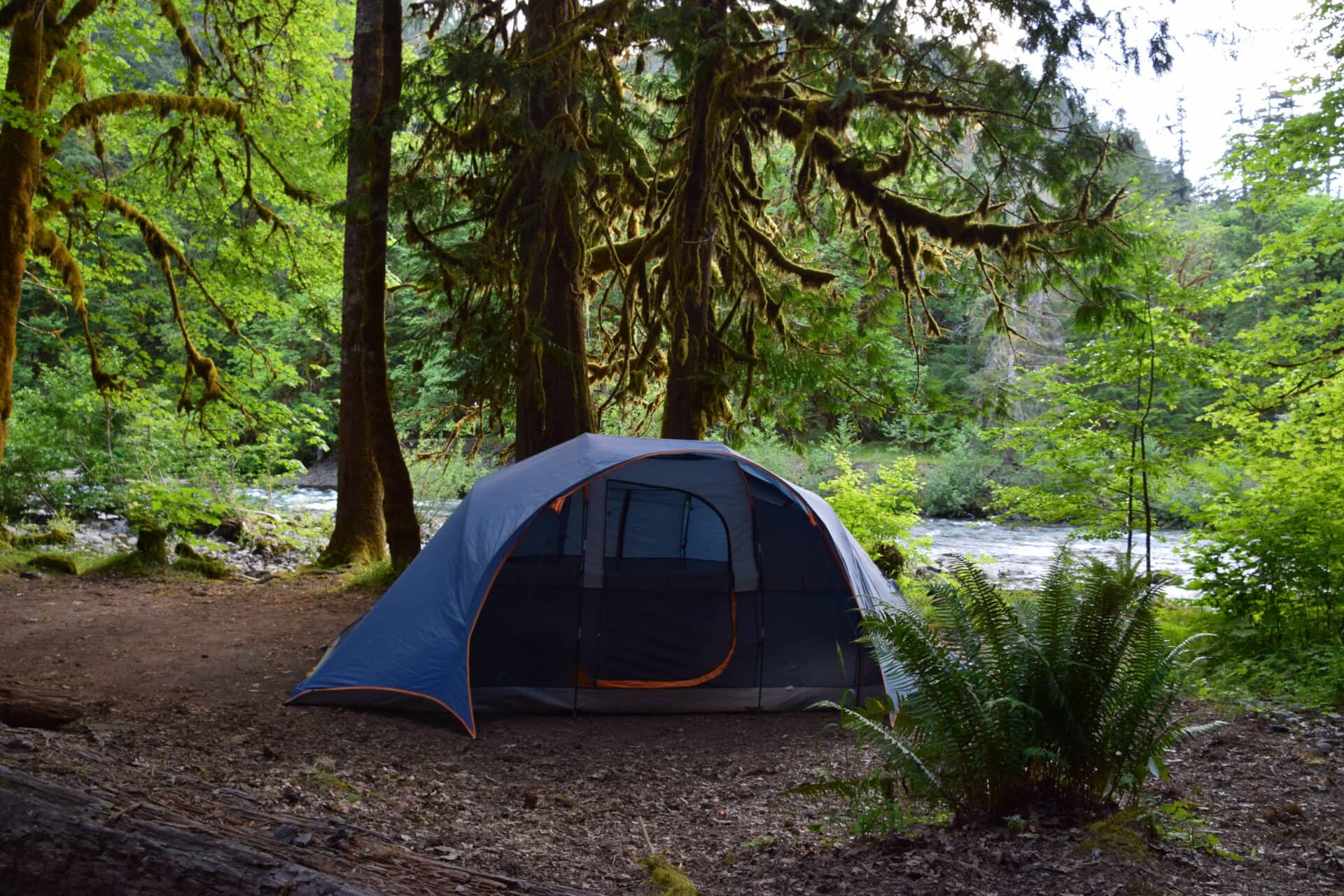
Wilderness Camping: Fully 95 percent of Olympic National Park is designated wilderness, and visitors can backpack and camp in many parts of the Daniel J. Evans Wilderness area. There are hundreds of designated wilderness campsites in the park, which require a Wilderness Camping Permit and advance reservations.
Lodging is available inside the park year-round at Kalaloch Lodge, an oceanfront resort with hotel rooms, cabins, a group campsite, and dining at Creekside Restaurant.
Seasonal lodging inside the park can be found at:
Log Cabin Resort: Rustic, log-cabin style accommodations on the shore of Lake Crescent.
Lake Crescent Lodge: Stays in a 1915 lakefront hotel with water-view dining.
Sol Duc Hot Springs Resort: Rental cabins and bathing in mineral pools.
Outside the park, there are year-round hotels and motels in Sequim, Port Angeles, and Forks, including:
Juan de Fuca Cottages: Charming waterfront cottages on Dungeness Bay in Sequim.
Olympic Lodge: Beautifully landscaped resort hotel in Port Angeles with a pool, golf course, and water-view rooms.
Forks Motel: Downtown budget-friendly lodging with an outdoor pool.
Bed-and-breakfasts and other small lodgings are also available outside the main areas of Sequim, Port Angeles, and Forks, but on a limited basis and mostly during summer.
Where to eat in and around Olympic National Park?
Kalaloch Lodge and Quinault Lodge offer dining year-round inside the park, and you can also get a hot meal or cold drink at Lake Crescent Lodge, Log Cabin Resort, or Sol Duc Hot Springs Resort during the summer. There’s also a café at Hurricane Ridge that’s open in summer and in winter when the road is open.
Outside the park, a wide variety of restaurants are found in Port Angeles year-round, with a more limited menu of options in Forks and La Push, including:
Next Door Gastropub: This Port Angeles restaurant is a popular gathering place for small plates and local beer.
Sully’s Drive In: Classic small-town burger joint in Forks with eat-in and takeout service.
River’s Edge Restaurant: Set on the banks of Quillayute River in La Push, this restaurant serves three meals daily, including fresh local salmon served traditional style by members of the Quileute Tribe, which owns the place.
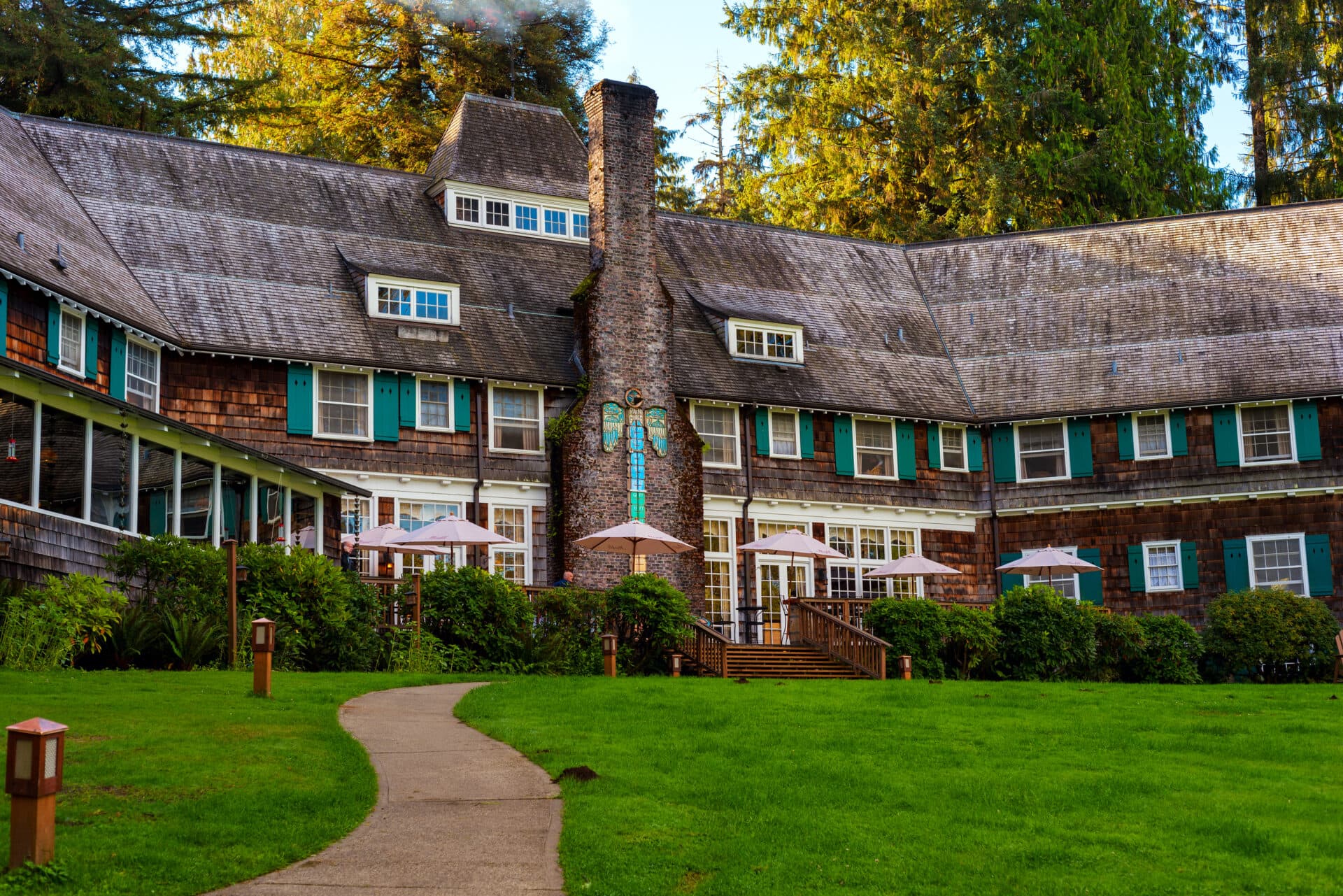
Groceries are readily available year-round in Port Angeles, Forks, and Amanda Park (near Quinault Rain Forest).
How many days should you plan to spend in Olympic National Park?
A one-day visit to Olympic National Park usually includes a visit to Hurricane Ridge and Lake Crescent on the north side, saving the longer trip to the ocean beaches and Hoh Rain Forest for a second day in the future.
Olympic is best experienced as a “3-day park,” where one can drink in the vistas and the subtle trailside experiences for a day in the mountains, another day in the forest, and a third day at a Pacific Ocean beach. In other words, plan for a day hiking and exploring Hurricane Ridge, another in Hoh Rain Forest, and a day on the trails at Shi Shi Beach, Ozette Lake, Rialto Beach, Second Beach, Third Beach, and/or Ruby Beach.
Be sure to work into your itinerary at least one night staying inside the park, either at a campground or a lodge, to experience its evening serenity and take part in ranger-led campfire talks or night-sky programs.
Those who try to see the whole park in a single day will find themselves doing a lot of driving but with limited time to sightsee from the trails (which are the best part of the park for most people).
